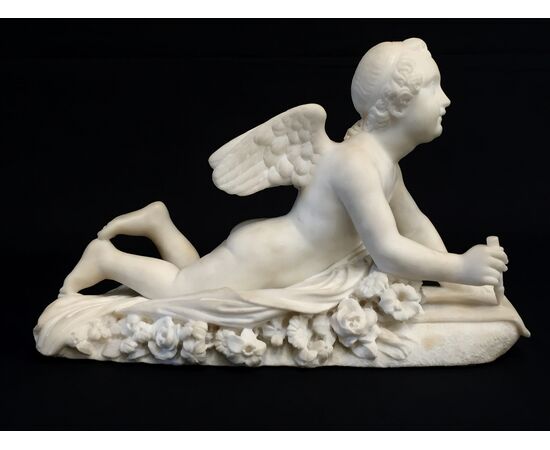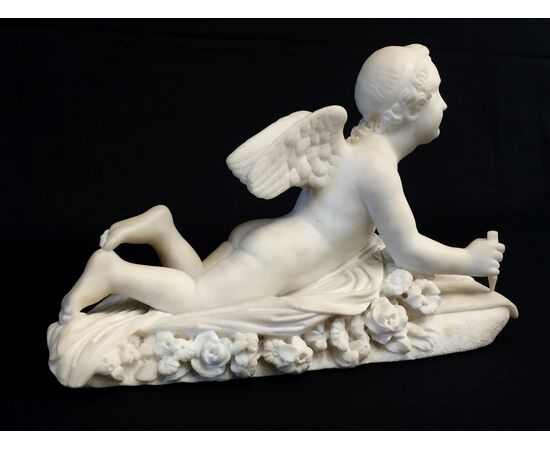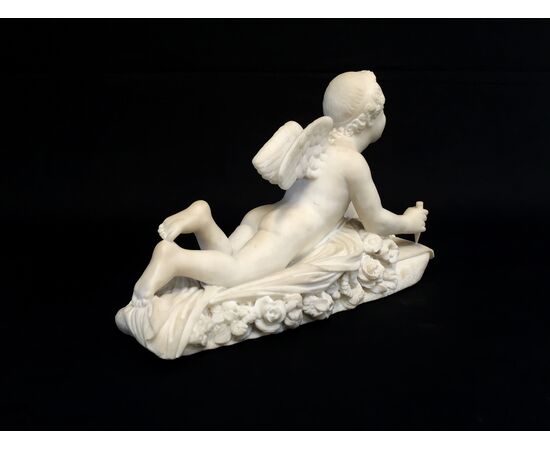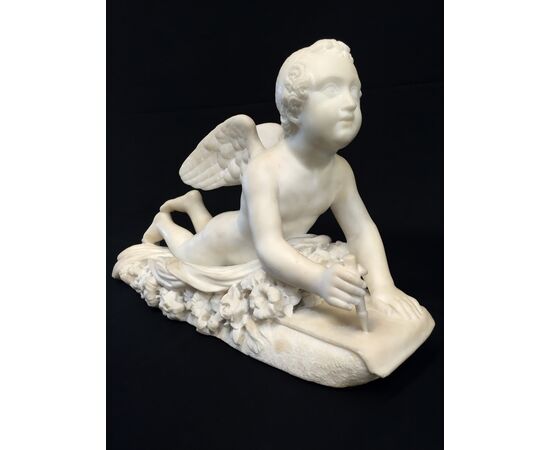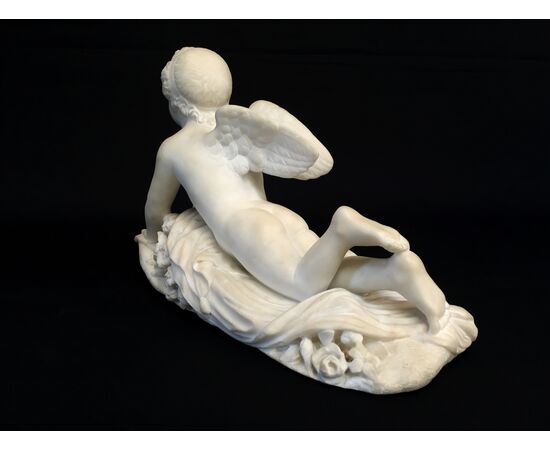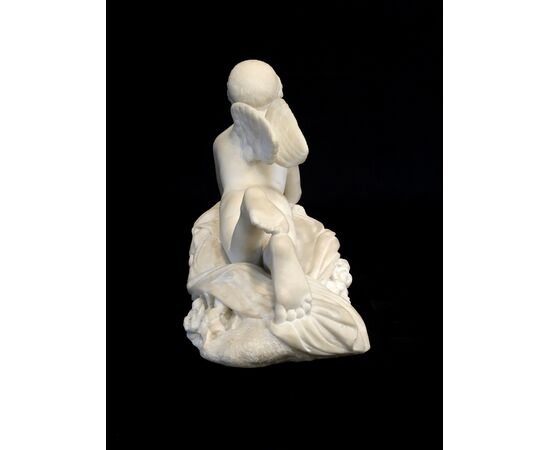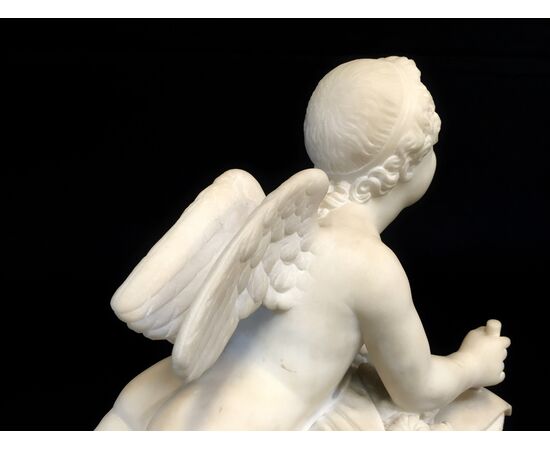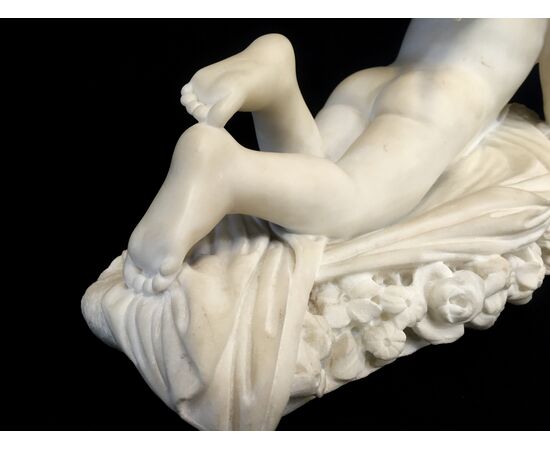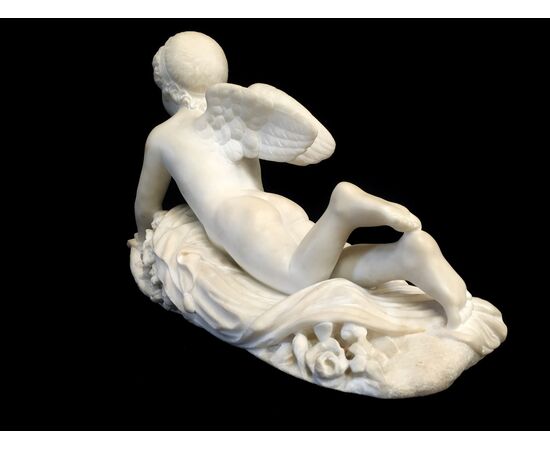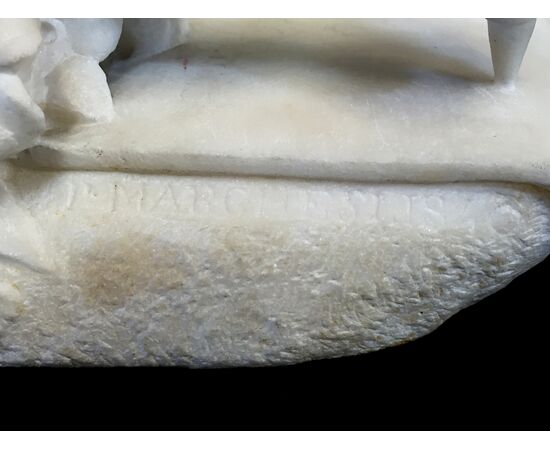White marble sculpture, signed Pompeo Marchesi, Cupid writing, 1840
White marble sculpture, signed Pompeo Marchesi, Cupid writing, 1840
Dimensions H 27 x W 42 x D 17 cm
Price between euro 7,500.00 / 8,500.00
Item accompanied by a certificate of authenticity
This fine sculpture, made of white marble in 1840, is a signed work by Pompeo Marchesi.
It depicts a Cupid writing. The cupid is the mythological personification of the god of Love, depicted in poetry and art as a child, mostly naked and winged. In this work, he appears lying prone on soft drapery from which a redundant composition of flowers emerges. The cupid turns his gaze forward, raising himself on his left arm; with his right hand, he is intent on writing on a parchment. The slightly raised feet recall the childlike attitude and contribute to giving movement to the figure.
The work is representative of the romantic artistic expression of the famous sculptor Pompeo Marchesi. Pompeo, son of Gerolamo Marchesi, marble worker, and Caterina Tamburini, was born in Saltrio (near Varese) on August 7, 1783. After an initial training at the Milanese Accademia di Brera, he perfected his skills in Rome under the guidance of Antonio Canova. Returning to Milan in 1810, Marchesi started the long activity for the construction site of the Duomo, marking the beginning of an extraordinarily intense career. He won numerous awards, participated in the annual exhibitions of Brera, and was very active in the decorations of large urban furniture works including the Arco del Sempione in Milan and the Duomo of Como. With the Restoration, Marchesi acquired considerable credit and soon became one of the major interpreters of the Habsburg court, establishing himself internationally.
Appointed "Imperial Royal Court Sculptor" in 1838, thanks to the offices of F. von Hartig, governor of Lombardy, Marchesi obtained directly from Emperor Ferdinand I the assignment of the monument for the Hofburg in Vienna.
The retirement from the Accademia di Brera in 1852 coincided with the beginning of the downward parabola of the artist, whom Stendhal had defined in the Charterhouse of Parma (1839) as the "fashionable sculptor" of Lombardy. Marchesi died in Milan on February 7, 1858.

